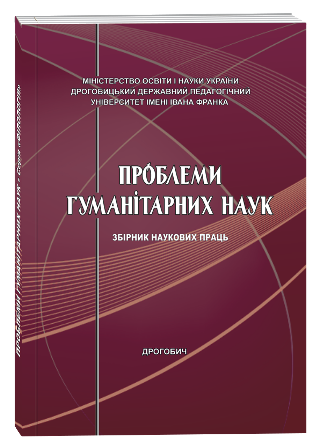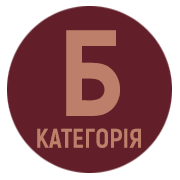DEVELOPMENT OF THE LEXICAL-DERIVATIONAL NEST WITH A DOMINANT “SCIENCE”
DOI:
https://doi.org/10.24919/2522-4565.2022.49.30Keywords:
language dynamics, factors of language changes, derivational semantics, innovative vocabulary, derivational neologisms, word-forming type, word-forming means.Abstract
The article considers the peculiarities of dynamic processes in the system of modern Ukrainian language. External and internal reasons for the development of the language system are identified, in particular those that contributed to the emergence of new lexical units (scientific and technological progress, information technology, systemic nature of language, the law of conservation of language energy, language antinomies, word-forming potential). Emphasis is placed on the activity of derivational neologisms represented in the new explanatory Dictionary of the Ukrainian language in 20 volumes. It was found that among the innovative vocabulary, the group of lexical units united by a common derivational semantics “science” has significantly expanded its range. The research was conducted by word-formation analysis, statistical method, descriptive method with elements of comparative analysis, as well as the method of comparison. The analysis of the studied material showed that within the morphological method of word formation, which is the most common, the most productive is the method of word formation, unproductive – suffix method, other methods of forming new words – not productive. It was found that significant activity in the creation of complex words of the analyzed group was marked by the word-forming formant scientific – (supporting is the cohesive connection), as well as the element of science – (supporting is the contractual connection). It is established that the new lexical units of the lexical-derivational nest with the dominant “science” represent the new Dictionary of the Ukrainian language in three lexical and grammatical classes: adjectives (largest number), nouns (smaller number), adverbs (single cases). Among the group of new derivatives that emerged through these methods, the relevant semantic groups are outlined: lexical units to denote persons; adjective nouns to denote abstract concepts; names of branches of science and sections of branches of science; names of processes related to both scientific and educational activities; adjective formations related to the publishing of scientific literature, etc. Qualitative and quantitative changes in the lexical composition of the Ukrainian language testify to its dynamic nature, due to the internal ability to change, as well as the external tendency to society to acquire new knowledge.
References
Архангельська А. М. Фемінінні інновації в новітньому українському назовництві. Мовознавство. 2014. № З. С. 34–50.
Брус М. П. Фемінітиви в українській мові: генеза, еволюція, функціонування : монографія. Івано-Франківськ : ДВНЗ «Прикарпатський національний університет імені Василя Стефаника», 2019. 440 с.
Вакуленко М. О. Декілька зауваг щодо фемінітивів української мови. Вісник НАН України. 2018. № 1. С. 86–89.
Земская Е. А. Словобразование как деятельность. Москва : Наука, 1992. 220 с.
Кудрявцева Л. А. Моделирование динамики словарного состава. Киев : ИПЦ «Киевский университет», 2004. 208 с.
Лінгвістично-інформаційні студії : Праці Українського мовно-інформаційного фонду НАН України : у 5 т. Т. 3 : Тлумачна лексикографія. Кн. 3: Динаміка лексико-семантичного складу Словника української мови у двадцяти томах / В. А. Широков та ін. : монографія. Київ : Український мовно-інформаційний фонд НАН України, 2018. 230 с.
Муромцева О. Г. Розвиток лексики української літературної мови кінця 80-90 років ХІХ – поч. ХХ ст. Харків : Вища школа, 1985. 158 с.
Радзієвська Т. В. Дискурсивні аспекти динаміки української мови в контексті активних мовних процесів у слов’янському світі. Мовознавство. 2013, № 2-3. С. 149–162.
Русанівський В. М. Мова і суспільний процес. Мова і процеси суспільного розвитку. Київ : Наукова думка, 1980, С. 17–23.
Словник української мови : в 11-ти томах. URL: http://sum.in.ua/ Словник української мови : в 20-ти томах (1–11 томи). URL: https://services.ulif.org.ua/expl/Entry/ index?wordid=57199&page=1822
Стишов О. А. Українська лексика кінця ХХ століття (на матеріалі мови засобів масової інформації). Київ : Видавничий центр КНЛУ, 2003. 388 с.
Тараненко О. О. Актуалізовані моделі в системі словотворення української мови (кінець ХХ – початок ХХІ ст.) : монографія. Київ : Видавничий дім Дмитра Бураго, 2015. 248 с.



